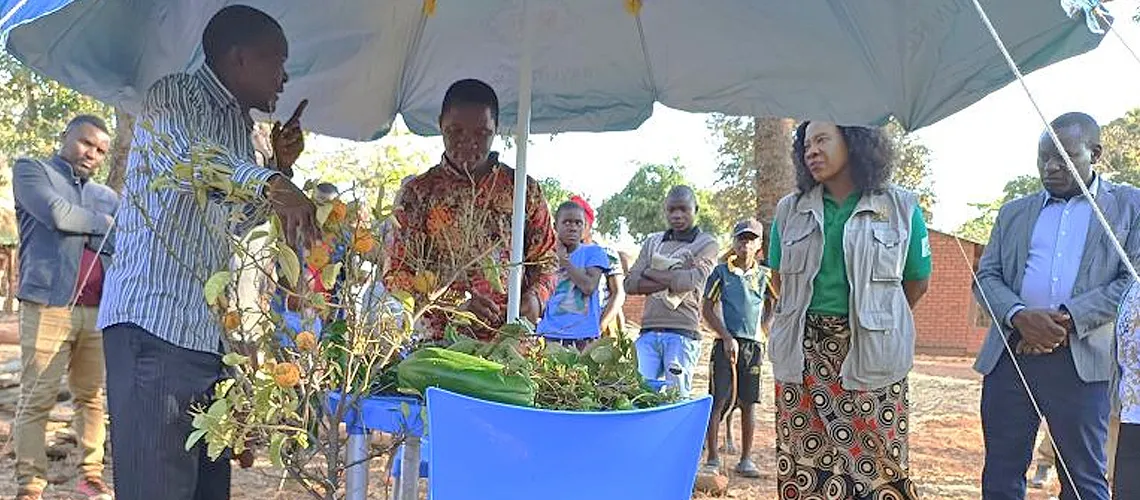Pest and diseases are a global challenge when it comes to turning food and nutrition security into reality. Climate change has also caused the dispersal and intensity of pests to worsen. The Food and Agriculture Organization (FAO) of the United Nations estimates that annually up to 40% of global crop production is now lost to pests.
Each year, such plant diseases cost the global economy over $220 billion, while invasive insects cost it at least $70 billion. The impact of this is felt even more in small and unstable developing economies like Malawi, whose economy is agro-based.
But just as much as the global community is obsessed with “modernization of production techniques,” so integrated pest and disease management have proven that we do not entirely need to throw away traditional approaches in pest management.
The approach of using scientific advancement and technology seems to have left out old indigenous knowledge. An African proverb says, “Do not throw away your water just because you heard it will be raining.”
We must therefore acknowledge that the combination of both indigenous and scientific knowledge for pest management could help us achieve more than either approach can on its own.
Floods and pestilence
In the past two decades, Malawi has gone through frequent, intensified climate change impacts, including flooding, erratic rainfall, droughts, cyclones, and landslides. It has also witnessed an increased infestation of pest and diseases.
Some of the common pests experienced by crops are fall army worm, lepidopteran stem borers for cereals; Wireworms for roots and tubers; and pod borer, for legumes. Due to frequent outbreaks of these, the continuous use of chemical pesticides and the cost of pesticides has created health, safety, environmental, and economic concerns.
To address the gap that exists between modern and traditional methods of pest and disease management, the World Bank-supported Agriculture Sector Wide Approach-Supporting Project II (ASWAp-SP) prepared an integrated pest management plan to guide the management of pests and diseases, embracing the application of biological and mechanical methods to help ensure better outcomes for crops and farmers. The project’s overall aim is to improve the productivity of smallholder farmers and market access of selected commodities for smallholder farmers.
Using existing systems
Leveraging Malawi’s existing extension services in the agriculture sector, the project supported the establishment of 415 plant clinics in all the extension planning areas where selected plant doctors acted as a first point of contact for farmers.
These plant doctors are government staff, trained in the identification of pests and diseases and in the proper management of them. Many smallholder farmers are applauding the project for strengthening plant clinics right in their communities, as this does not cost them the money they would otherwise need for transport to access pest management extension.
With the plant clinics established, it is also quite interesting that farmers working with the plant doctors are mobilizing indigenous and traditional knowledge to continue supporting modern ways of managing pests and diseases. Of course, much of this knowledge is site-specific, as farmers are using different biological means for similar pests in different areas.
Overall, there has been 410% adoption of Integrated Pest and Disease Management (IDPM)—61,788 adopters against the 15,000 planned under the ASWAp SP II.
It is obvious to assume that the increase in the adoption has mostly been driven by the unexpected, increased cost of inputs, such as pesticides and fertilizer. However, beyond the cost, the driving force for the enormous adoption of IDPM is ecological.
Farmers use lemon grass, a soup from a fish species called limnothrissa miodon, ash, pepper, and a species of shrub called Vernonia amygdalina to manage weevils, worms, and aphids in cereals and legumes. These are some of the locally available resources, and farmers spend either less or nothing to access them, yet they are very effective in the management of pests and diseases.
This blog was originally posted on World Bank Blogs by Mercy Chimpokosera-Mseu, World Bank Environmental Specialist


